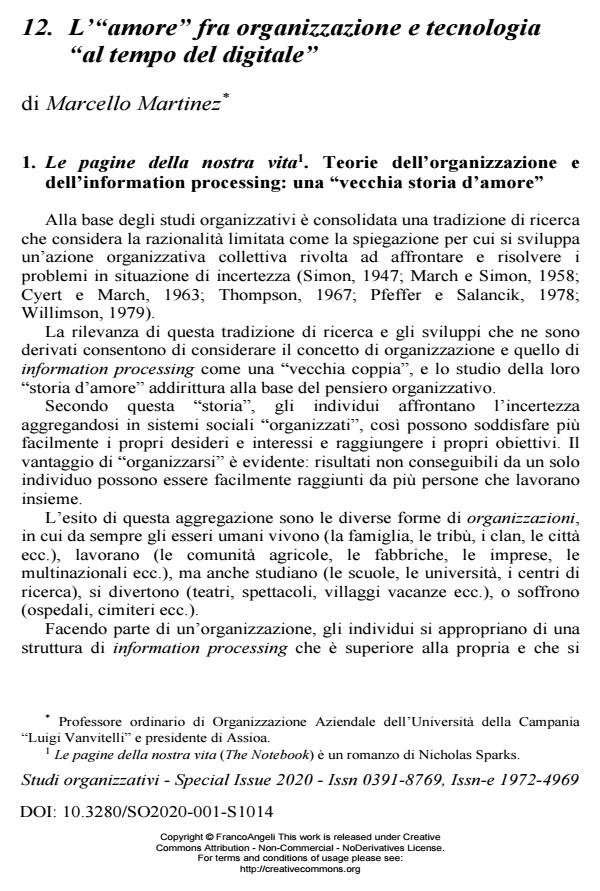L’"amore" fra organizzazione e tecnologia "al tempo del digitale"
Titolo Rivista STUDI ORGANIZZATIVI
Autori/Curatori Marcello Martinez
Anno di pubblicazione 2020 Fascicolo 2020/suppl. 1
Lingua Italiano Numero pagine 9 P. 231-239 Dimensione file 213 KB
DOI 10.3280/SO2020-001-S1014
Il DOI è il codice a barre della proprietà intellettuale: per saperne di più
clicca qui

FrancoAngeli è membro della Publishers International Linking Association, Inc (PILA)associazione indipendente e non profit per facilitare (attraverso i servizi tecnologici implementati da CrossRef.org) l’accesso degli studiosi ai contenuti digitali nelle pubblicazioni professionali e scientifiche
Marcello Martinez, L’"amore" fra organizzazione e tecnologia "al tempo del digitale" in "STUDI ORGANIZZATIVI " suppl. 1/2020, pp 231-239, DOI: 10.3280/SO2020-001-S1014